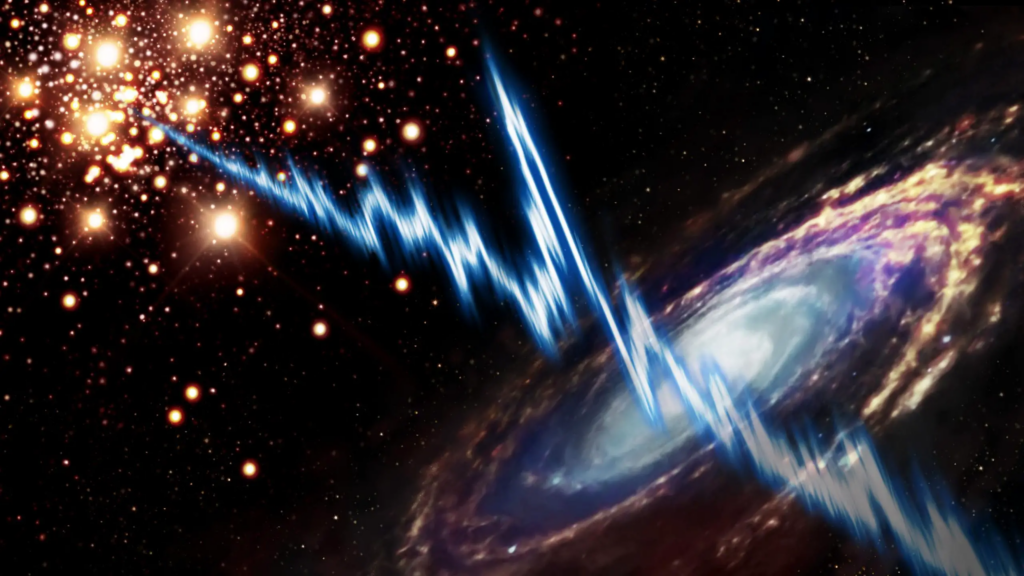In a recent study published in The Astrophysical Journal, a single telescope accomplished a remarkable feat by simultaneously detecting a rapid radio burst (FRB) and star-forming plasma in a nearby spiral galaxy. The CSIRO’s ASKAP radio telescope (Australian Square Kilometre Array Pathfinder) enabled the discovery.
FRBs, which are extremely potent radio emissions, were first detected in 2007 and have been traced to distant galaxies. These signals, which typically last only a few milliseconds, have perplexed astronomers for years.
Despite their extreme brilliance, these bursts are extremely ephemeral, making it difficult for many radio telescopes to pinpoint their precise location. Without this vital information, the study of galaxies containing FRBs becomes a formidable endeavor.

Astronomers find strange signal from neighboring galaxy.
In addition, our inability to unravel the mysteries surrounding FRBs is hindered by our ignorance of the environments in which they are formed.
ASKAP, which consists of 36 antennas, is able to detect FRBs and pinpoint their host galaxies. During a recent observation for a survey designed to map the star-forming gas in galaxies across the Southern sky, ASKAP detected both a FRB originating from a spiral galaxy similar to our own Milky Way and the cool neutral hydrogen gas surrounding it. This is the first time that these occurrences have been detected simultaneously.
According to the researchers, the environment of the host galaxy in this particular FRB appears surprisingly tranquil. This discovery necessitates additional research to determine whether perturbed gas environments are commonly associated with FRBs or whether distinct scenarios – and possibly multiple pathways – exist.
